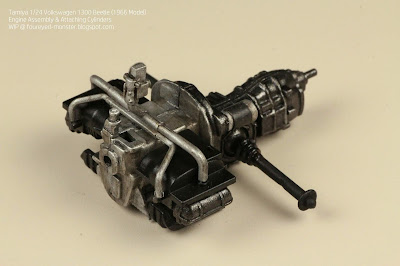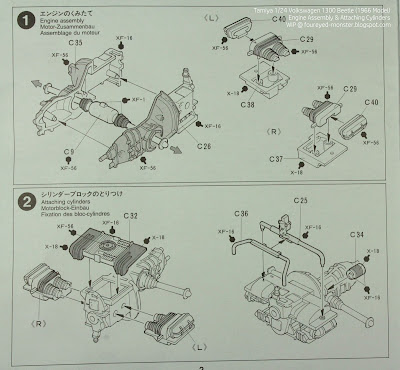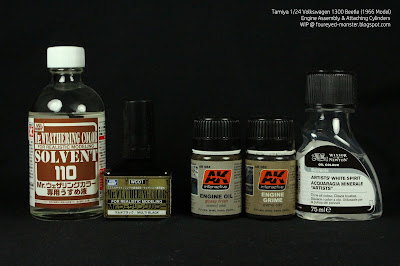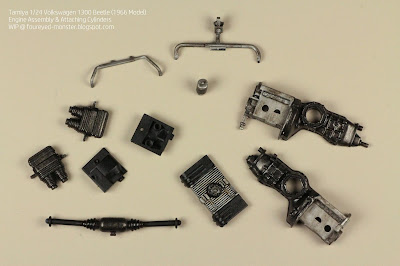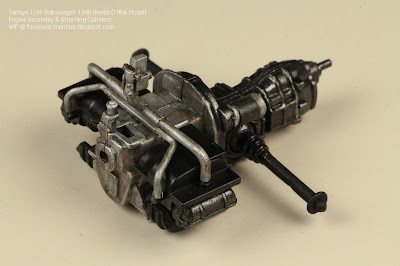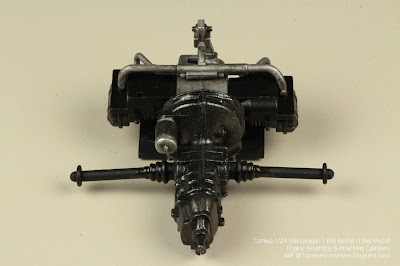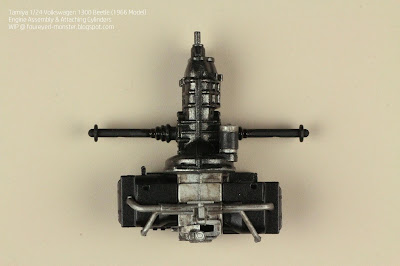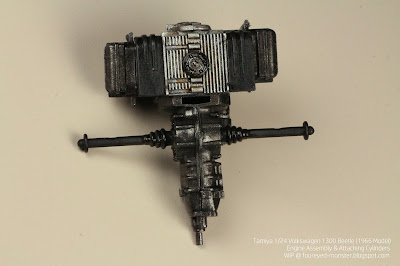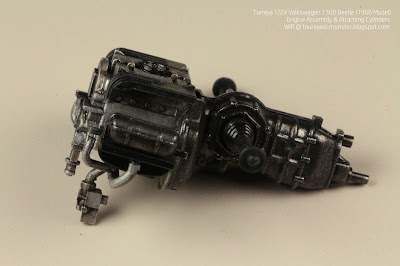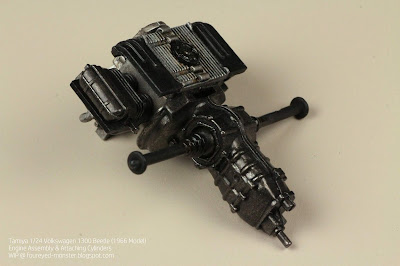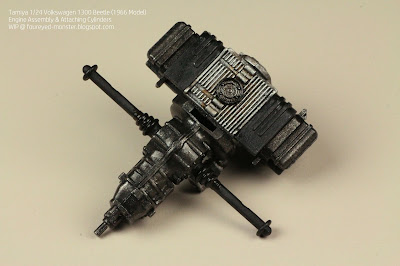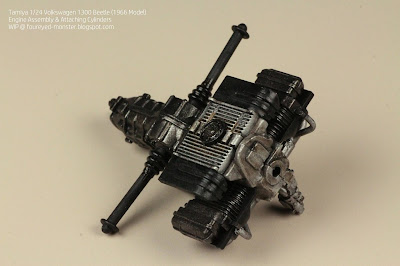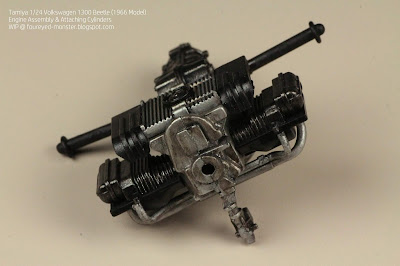You would think that finding matching colors for the hull and deck of the
Super Battleship Yamato is a pretty straightforward exercise. Then again, I tend to overcomplicate things by overthinking solutions to problems arising out of extensive research. And so it was with the
Yamato. Over the years there have been quite a few versions of this iconic anime spaceship. They can be largely grouped into three distinct color schemes namely an all-metallic one from the live-action movie, and either a neutral gray-red or blue gray-red from the original anime as well as remake series.
 |
| Space Battleship Yamato (top to bottom) as seen in the live-action movie, season one and two of the anime series remake |
Adding to the possible iterations of its color scheme is the fact that Yamato's deck also comes in various hues such as traditional navy ship wooden deck tan, pale violet brown, metallic, or a color identical to the upper hull. Whether all these color options is viewed either as a hindrance or a scale modeler's wet dream is down to a matter of perspective. Personally I'm for the latter as the more color schemes available to a subject matter, the greater its artistic potential. And as for the
Super Battleship Yamato 2199, Cosmo Reverse Version, I plan to use the blue gray-red-pale violet brown color combination. There'll be plenty of opportunity to use other schemes in future builds.
 |
| Bandai Color Guide for the Space Battleship Yamato 2199, Cosmo Reverse version |
 |
| Paint equivalents for the 1/1000 scale Cosmo Reversion version as translated into English by www.mech9.com |
Meanwhile, I noticed a trend in the Bandai Color Guides in which they are slowly transitioning from recommending Mr.Hobby's lacquer-based
Mr Color paints to its water-based acrylic
Hobby Aqueous Color paints instead. As I mainly use the former, it's getting harder for me to find the exact paint recipes to mix the colors I need. One way around this is to refer to Color Guides from the older Bandai scale model kits. Sometimes this is unnecessary as the Mr.Hobby acrylic paints have their lacquer equivalents. It's when they don't when it becomes harder for me to achieve color accuracy.
 |
| Color Guide for a 19-year-old Bandai Space Battleship Yamato 1/500 scale model kit |
 |
| Paint equivalents for the 1/500 scale Yamato as translated into English by www.mech9.com |
For this project, I used a combination of color guides from an older kit (released late-2010) and the present kit namely the
Space Battleship Yamato, Cosmo Reverse Version. The reds and grays of the Yamato were based on paint recipes of the older 1/500 scale kit while the deck was based on the recipe of the existing kit. Luckily for me, the latter recipe suggested acrylic paints that had lacquer equivalents. So with the main exterior colors accounted for, I was good to go. And then to create some variation of these main colors, I plan apply weathering using oil and enamel-based paints.
 |
| Space Battleship Yamato Reds and Grays mixed at a paint ratio recommended in the older kit's color guide |
 |
| Resulting mix of the Yamato Gray hue looks very close to the sprue's molded color i.e. a bluish gray |
 |
| Ditto for the Yamato Red hue which looks almost a 100% match to the sprue color |
 |
| While Yamato's decks are molded in blue gray, the color guide recommends a kind of pale violet brown |
On a side note, I was lucky to come across a set of discontinued paints created specifically for the Space Battleship Yamato circa 2199. While I do not intend to use them on this project, they did provide me with a reference point for what is deemed as officially acceptable colors for the Yamato.
 |
| Mr.Hobby Mr.Color Special Set - Space Battleship Yamato 2199 (seemingly no longer in production) |
 |
| Paint hues provided in the Mr Color Space Battleship Yamato 2199 Special Set |
 |
| A pictorial guide showing where on the Space Battleship Yamato to apply the paint colors |
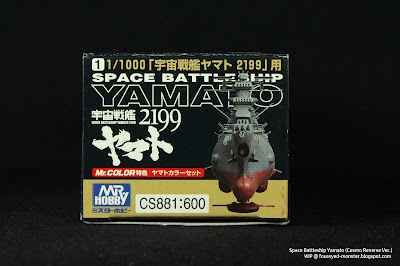 |
| In keeping with the photo above, the Yamato Gray is more of a light neutral gray vs the blue gray mixture |
 |
| Before storage, the paints were thinned with Mr.Color Leveling Thinner at a ratio of 1:1 |
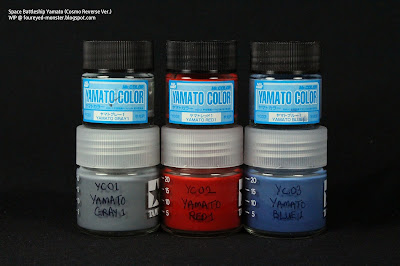 |
| A closeup look at the Yamato hues as found in the Mr.Hobby Mr.Color Special Set |
Of the three colors provided in this set, I was particularly interested
in the shade of red and gray. While the red seemed similar to the batch I
mixed up, the gray was more of a neutral gray. As a stickler for color
accuracy, I feel that having this official color paint set is absolutely
priceless.
 |
| Comparison of the mixed Yamato grays and reds versus the ready-made ones in the Mr.Color Special Set |
So with the paint colors all mixed up, at least the main ones, it's time to assemble the
Bandai 1/1000 scale Super Battleship Yamato 2199, Cosmo Reverse Version. Some Yamato kit variations allow for the addition of LED lights. This one though, does not. As such, the assembly should be fairly less complicated. With that I leave you with a quote often attributed to Captain Okita, the first commander of the Space Battleship Yamato ...
The less time you have, the more you need to use it wisely.







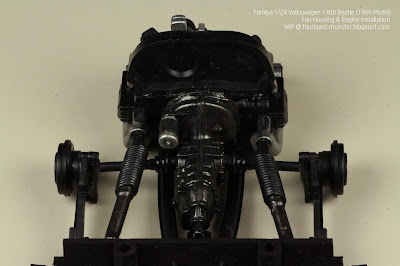










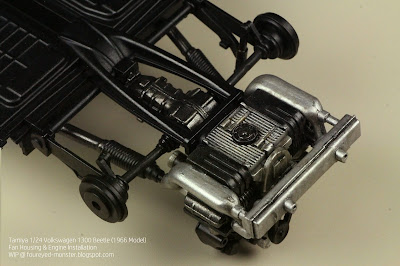























.jpg)
